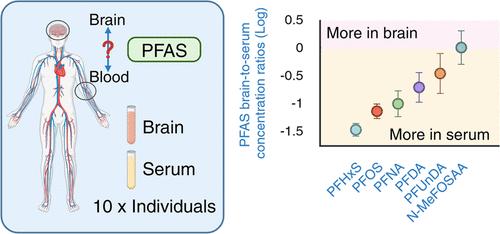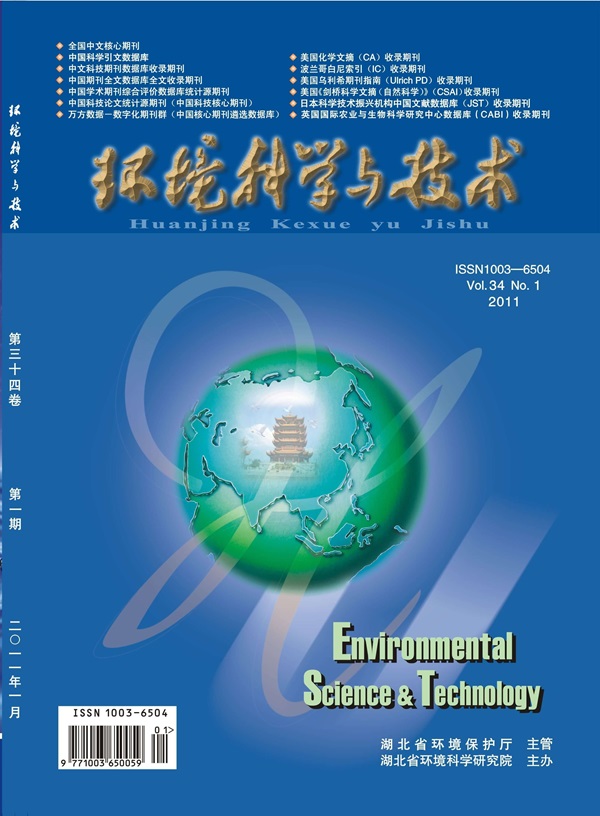Number of Carbons Is a Critical Parameter for Accumulation of Per- and Polyfluoroalkyl Substances in the Human Brain
IF 10.8
1区 环境科学与生态学
Q1 ENGINEERING, ENVIRONMENTAL
引用次数: 0
Abstract
Per- and polyfluoroalkyl substances (PFAS), a large group of manmade chemicals, have been detected extensively in the blood of people living in developed countries. Although it has been suggested that PFAS exposure might be associated with harmful effects on the brain, few studies have assessed the presence of PFAS in brain tissues. This study aimed to evaluate the concentrations of a broad range of PFAS in paired postmortem human brain and serum samples and investigate brain-to-serum concentration ratios. A partitioning experiment using PFAS-fortified animal brain samples additionally investigated differences in distribution between lipid-rich brain and water for different PFAS. Out of the 43 PFAS analyzed, 5 were detected in all paired human brain and serum samples, 11 were found in all serum, and 7 were found in all brain samples. Two PFAS compounds were observed at notably higher detection frequencies in brain samples compared to serum. The brain-to-serum ratios of PFAS concentrations ranged from approximately 0.04 for perfluorohexanesulfonate (PFHxS) to 1.3 for N-methyl perfluorooctanesulfonamido acetic acid (N-MeFOSAA) with a clear increase in PFAS brain-to-serum ratios with the total number of carbons. There were no differences between the two cortical brain regions analyzed. Results underscore the necessity of a better understanding of individual PFAS, as the difference in their properties can influence their behavior within the human brain.

求助全文
约1分钟内获得全文
求助全文
来源期刊

环境科学与技术
环境科学-工程:环境
CiteScore
17.50
自引率
9.60%
发文量
12359
审稿时长
2.8 months
期刊介绍:
Environmental Science & Technology (ES&T) is a co-sponsored academic and technical magazine by the Hubei Provincial Environmental Protection Bureau and the Hubei Provincial Academy of Environmental Sciences.
Environmental Science & Technology (ES&T) holds the status of Chinese core journals, scientific papers source journals of China, Chinese Science Citation Database source journals, and Chinese Academic Journal Comprehensive Evaluation Database source journals. This publication focuses on the academic field of environmental protection, featuring articles related to environmental protection and technical advancements.
 求助内容:
求助内容: 应助结果提醒方式:
应助结果提醒方式:


